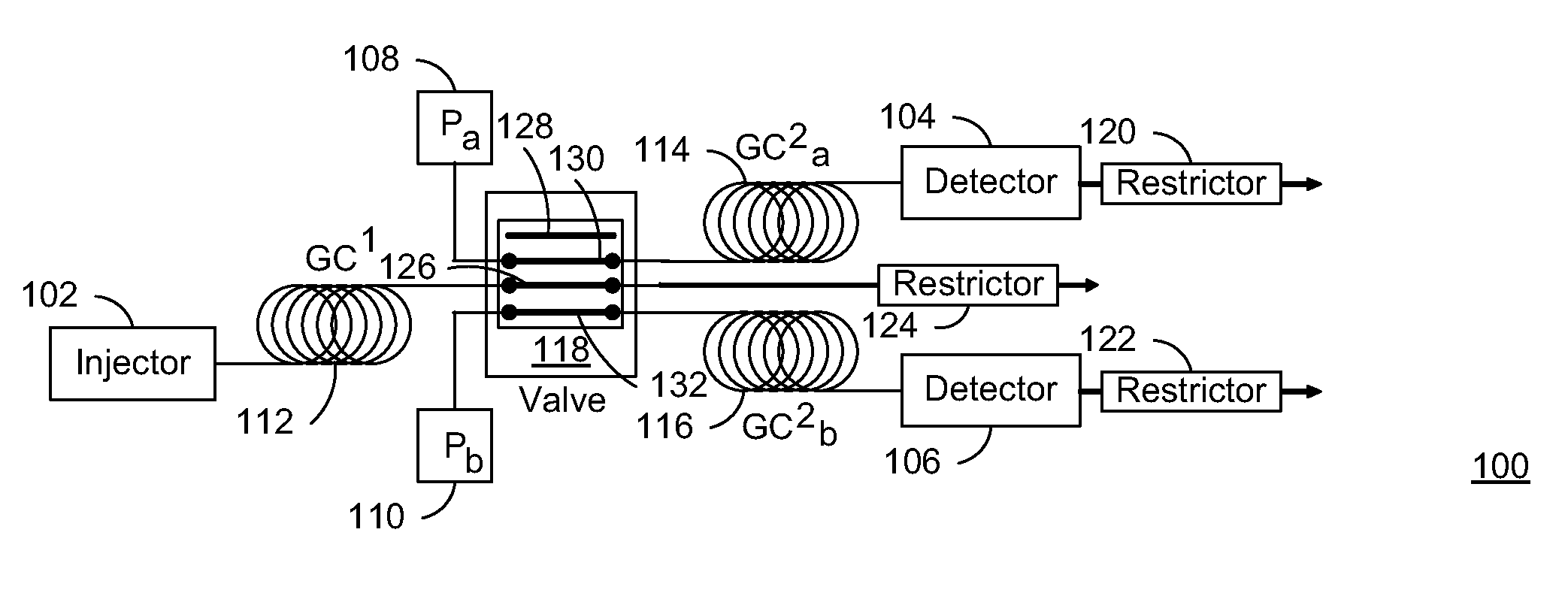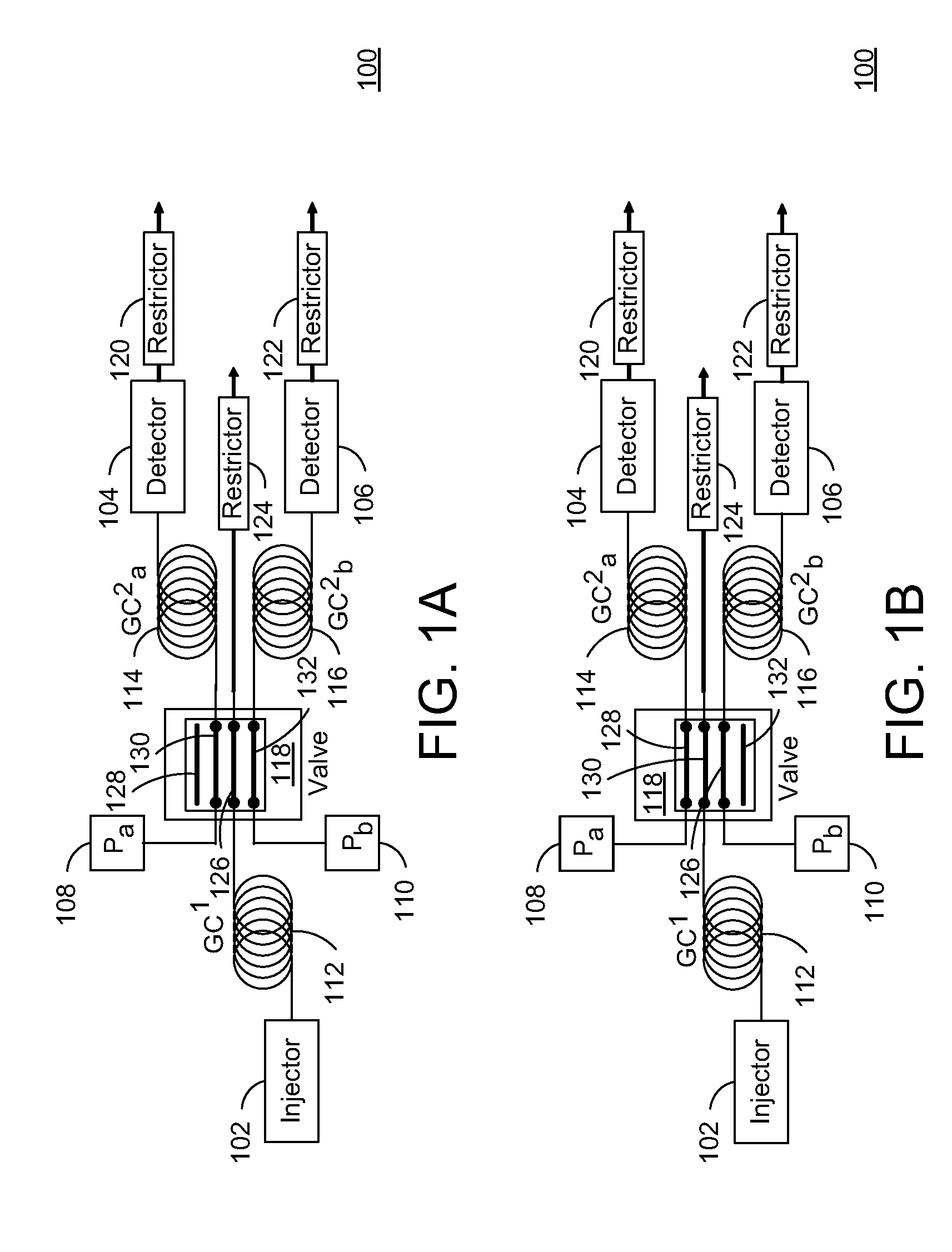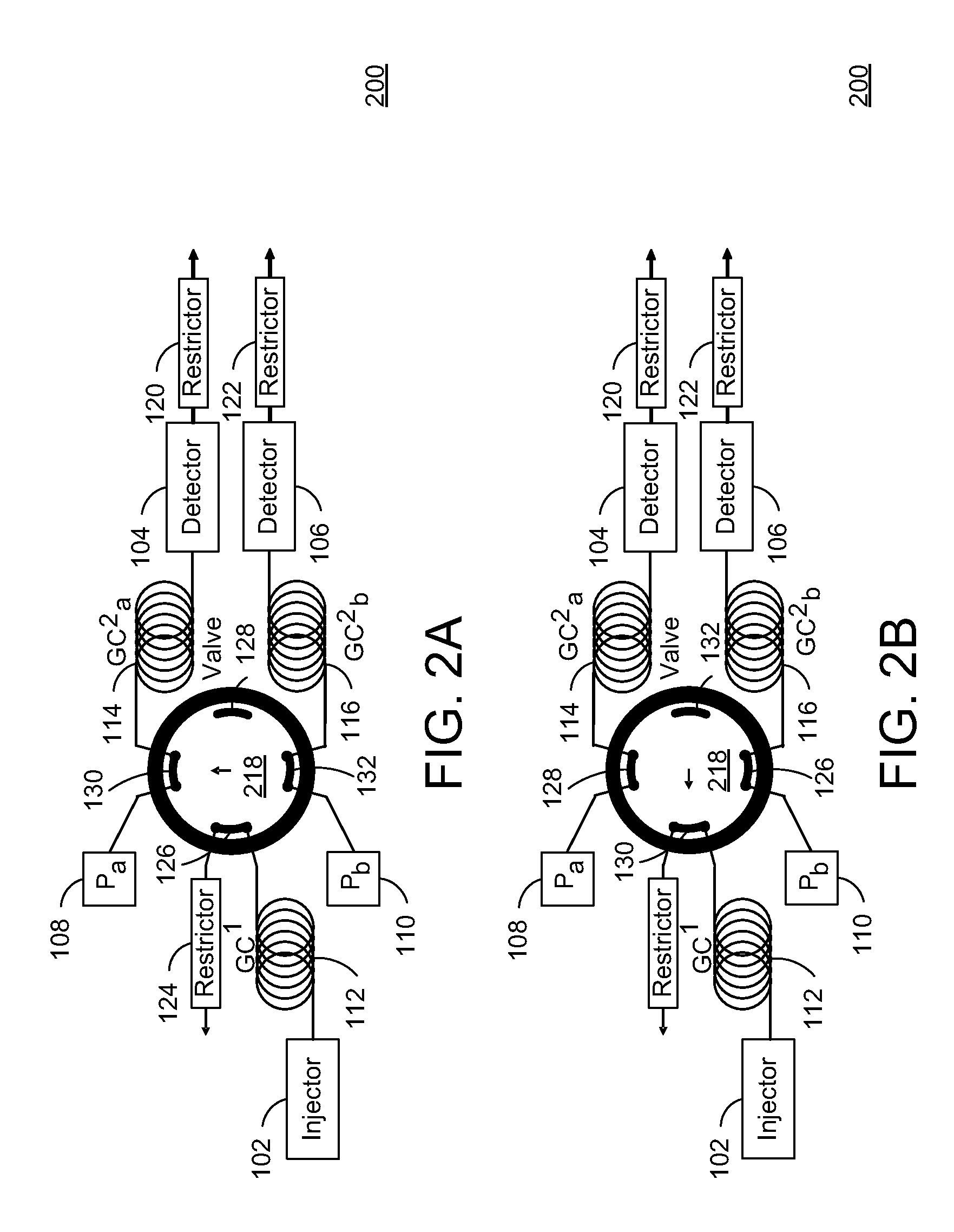Apparatus and method for multi-dimensional gas chromatography
a gas chromatography and apparatus technology, applied in the field of apparatus and methods for multi-dimensional gas chromatography, can solve the problems of difficult to optimize the flow conditions of the first and second dimensions, and not offering the peak capacity of gcxgc, etc., to achieve the effect of improving system performance, reducing separation time, and increasing modulation frequency
- Summary
- Abstract
- Description
- Claims
- Application Information
AI Technical Summary
Benefits of technology
Problems solved by technology
Method used
Image
Examples
Embodiment Construction
[0035]Various embodiments and aspects of the invention will now be described in detail with reference to the accompanying figures. The terminology and phraseology used herein is solely used for descriptive purposes and should not be construed as limiting in scope. Language such as “including,”“comprising,”“having,”“containing,” or “involving,” and variations thereof, is intended to be broad and encompass the subject matter listed thereafter, equivalents, and additional subject matter not recited.
[0036]Referring now to the drawings, wherein like reference numerals designate identical or corresponding parts throughout the several views, and more particularly to FIGS. 1-3 thereof, there are illustrated exemplary valve based modulation systems 100-300 that can be used for two-dimensional gas chromatography (GC) (GCXGC, GC-GC, or 2DGC). In FIGS. 1-3, the respective exemplary valve modulation systems 100-300 for two-dimensional gas chromatography include injectors 102, detectors 104 and 1...
PUM
| Property | Measurement | Unit |
|---|---|---|
| pressure | aaaaa | aaaaa |
| pressure | aaaaa | aaaaa |
| pressure | aaaaa | aaaaa |
Abstract
Description
Claims
Application Information
 Login to View More
Login to View More - R&D
- Intellectual Property
- Life Sciences
- Materials
- Tech Scout
- Unparalleled Data Quality
- Higher Quality Content
- 60% Fewer Hallucinations
Browse by: Latest US Patents, China's latest patents, Technical Efficacy Thesaurus, Application Domain, Technology Topic, Popular Technical Reports.
© 2025 PatSnap. All rights reserved.Legal|Privacy policy|Modern Slavery Act Transparency Statement|Sitemap|About US| Contact US: help@patsnap.com



